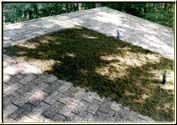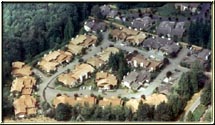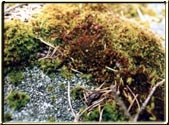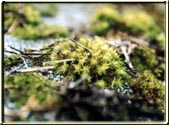What is Moss? (Boring Technical
Alert)
The black growth covering roofs is a fungus.
This fungus, because it lacks chlorophyll, is
unable to manufacture food from raw materials as other plants
do. It must therefore get nutrition from some form of organic
matter. When fungus receives its nutrition from
dead organic matter, it is called a
saprophyte. This particular fungus also requires a warm humid
environment to thrive in.
Now that we know what this growth is and what it
needs to survive, how does this apply to a
roof? Saprophytic fungus, in this instance, normally begins
a life cycle as airborne spores that settle on
asphalt/shingle roofs. The spores that
settle on the northern exposure of the roof typically stand a better
chance of survival because it is normally the last part of the roof
to dry after rain or morning dew. Once the sun
heats the roof, the moisture trapped around
the base of the ceramic granules begins evaporating. This raises
the humidity on the surface of the shingle, thus creating a perfect
breeding environment.
The tar used in the manufacture of asphalt
is fossilized, dead organic matter – the
specific food source needed to support saprophytic fungus. The
fungus secretes enzymes into the asphalt on which it
grows. The enzymes digest the material,
which is then absorbed through the walls of the hyphae.
Asphalt, at the ceramic granule base, is normally consumed first.
 Once these granules dislodge, accelerated deterioration
will occur. Ceramic granules represent
the outer hard shell that protects against hail and other falling
debris. Ceramic granules protect against damaging UV radiation and
insulate the roof against extreme heat. Once these granules dislodge, accelerated deterioration
will occur. Ceramic granules represent
the outer hard shell that protects against hail and other falling
debris. Ceramic granules protect against damaging UV radiation and
insulate the roof against extreme heat.
Go
to “Get a Bid to Clean you’re Roof” |


![]()
![]()
![]()